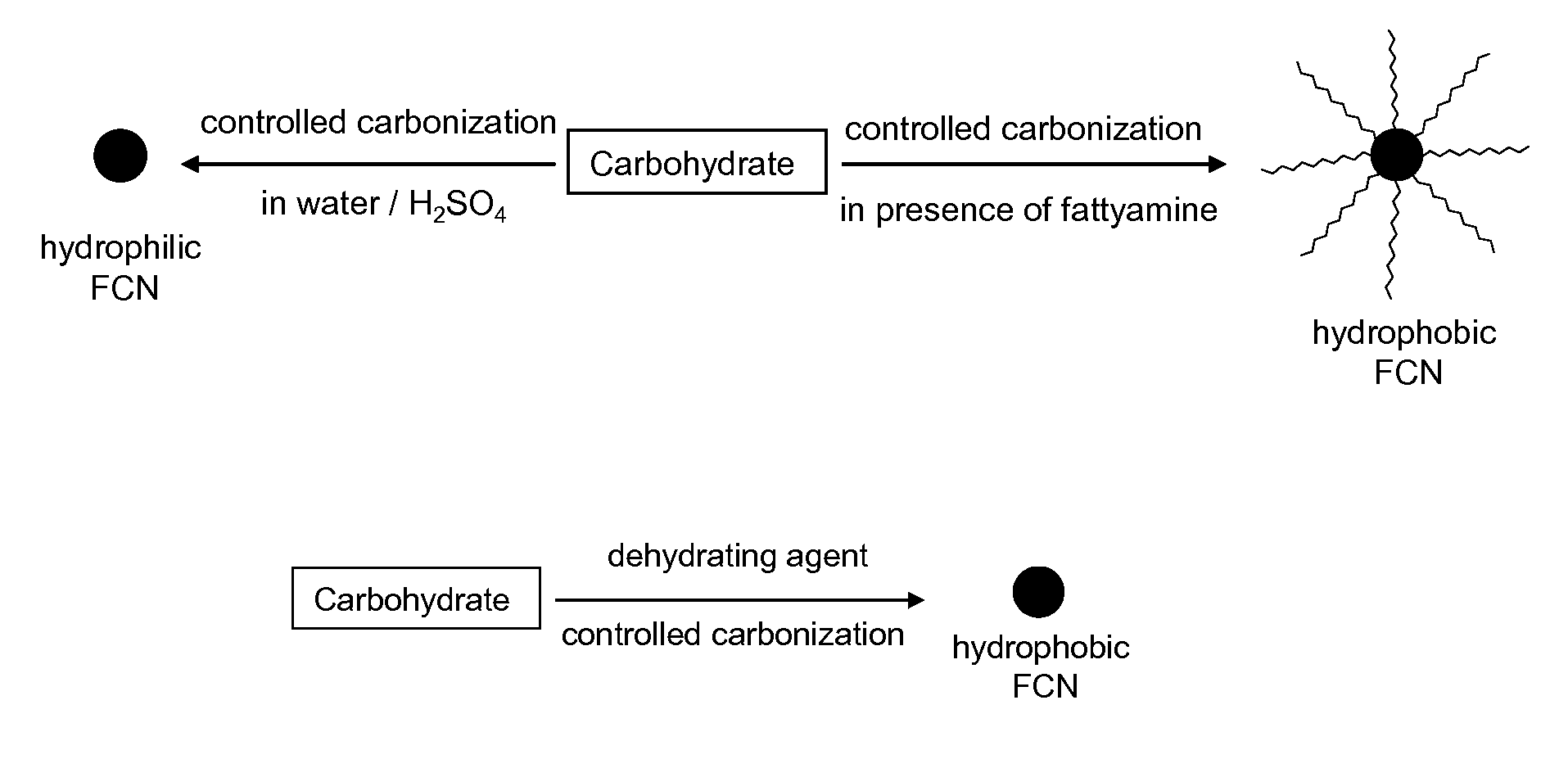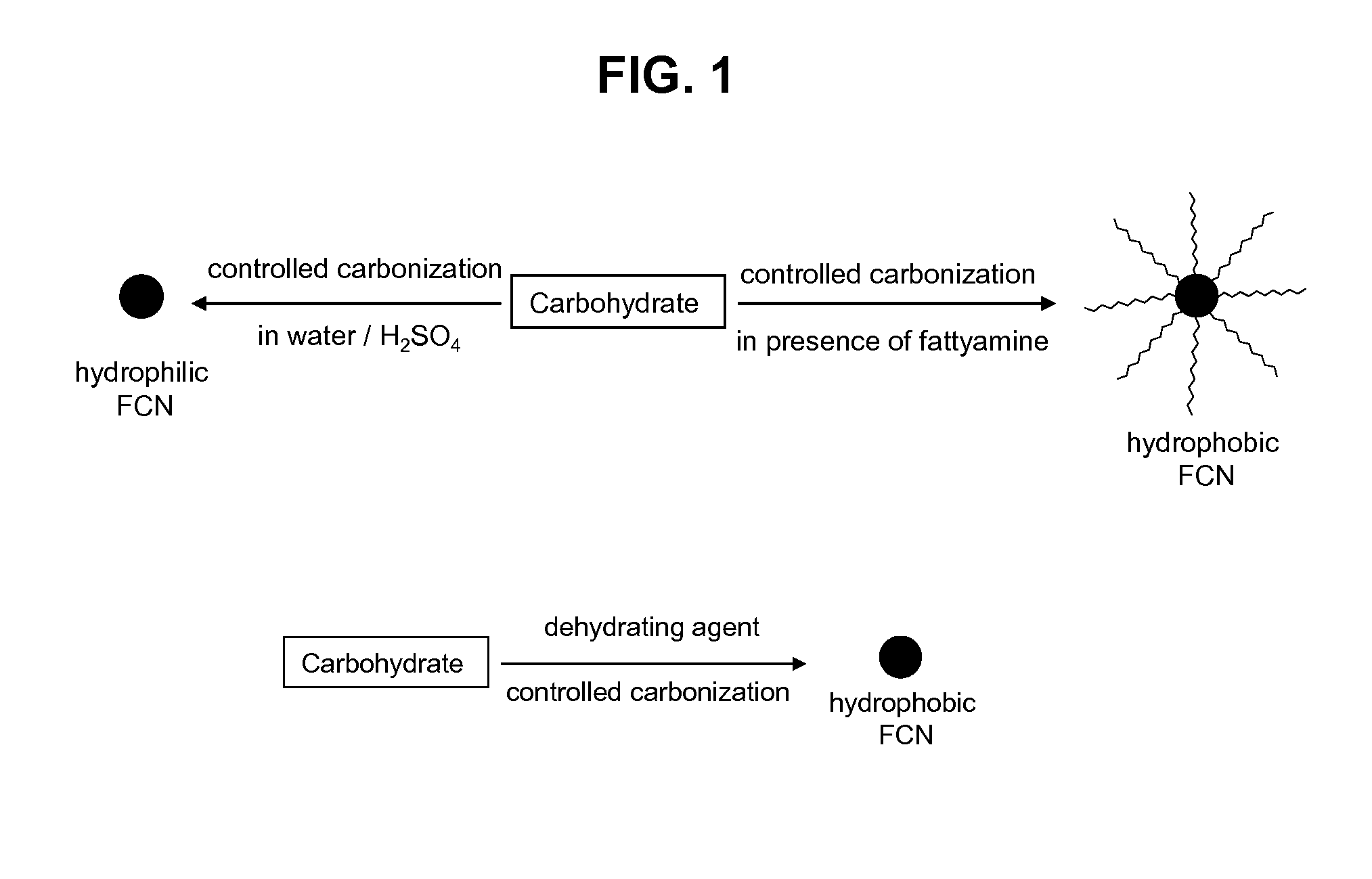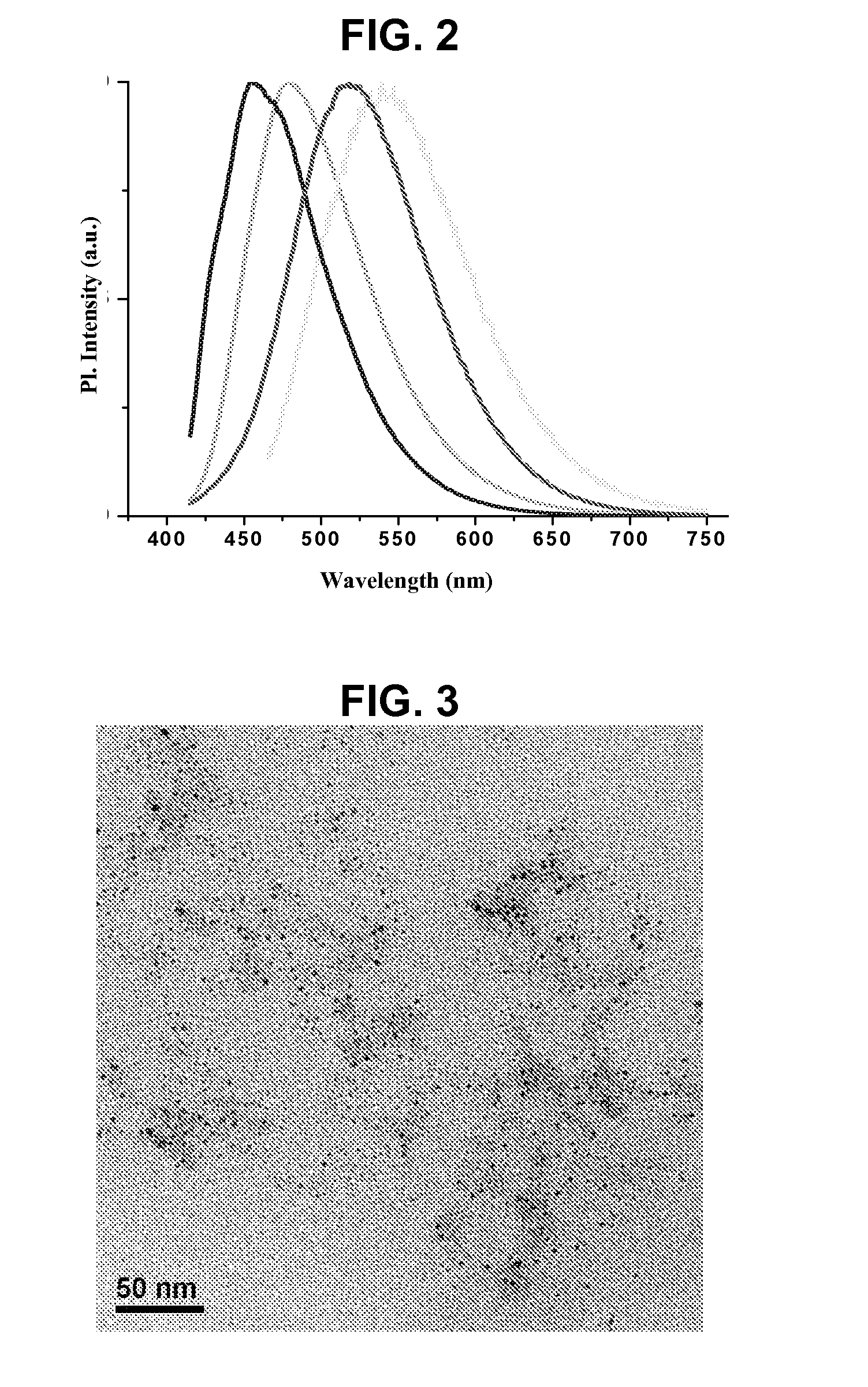Highly fluorescent carbon nanoparticles and methods of preparing the same
a carbon nanoparticle, fluorescent technology, applied in nanotechnology, biochemistry apparatus and processes, nanotechnology, etc., can solve the problems of limited synthesis of fcn, and distinct limitations in the preparation and application of fcn, so as to reduce particle size
- Summary
- Abstract
- Description
- Claims
- Application Information
AI Technical Summary
Benefits of technology
Problems solved by technology
Method used
Image
Examples
example 1
Preparation Method of the Fluorescent Carbon Nanoparticles
[0068]FCN is produced by controlled carbonization of carbohydrate molecule. Typically, a carbohydrate molecule is dissolved in a solvent and carbonization is performed either by heating at high temperature or using concentrated sulphuric acid. Rate of carbonization is controlled by heating temperature, solvent composition, solution pH and reaction time. Different approaches are used for controlled carbonization. In one approach solid carbohydrate molecule is mixed with long chain fatty amine and heated at high temperature. Although this approach is similar to the size controlled synthesis of metal and metal oxide nanoparticle by thermal degradation of metallic precursors, the carbohydrate degradation has not been studied in this growth condition. Advantage of this approach is that particle size can be controlled by controlling the nucleation-growth kinetics using different particle forming precursors, changing reaction temper...
example 2
Method of Preparing FCN
[0070]Aqueous solution of carbohydrate (such as glucose, glucosamine, dextran and cellulose) is mixed with concentrated sulfuric acid and carbonization has been performed either in room temperature or by mild heating for 15 minutes to 2 hours. Although the sulphuric acid based method is used earlier, in the present case the carbonization rate is controlled by using different carbohydrate molecules, reaction temperature and multiple injections of carbohydrate precursors during the growth stage. These modifications provide FCN with tunable emission colors with enhanced quantum yield.
[0071]In another approach yellow fluorescent carbon nanoparticles has been synthesized by carbonization of carbohydrate in concentrated phosphoric acid. Typically, carbohydrate is dissolved in concentrated phosphoric acid and heated to 80-90° C. for 1 minute to 5 hours and then reaction mixture is neutralized with sodium hydroxide. The resultant solution is highly yellow fluorescent ...
example 3
Characterization of FCN
[0073]FCN has been characterized by different methods such as elemental analysis, Fourier transform infrared spectroscopy (FTIR), proton NMR, TGA, transmission electron microscopy (TEM) and Raman spectroscopy. Elemental analysis shows the presence of elemental carbon above 75% along with hydrogen, nitrogen and oxygen. However, the elemental composition varies depending on the nature of precursor carbohydrate used and presence of surface adsorbed molecules. TEM study shows that smaller particles of 1-3 nm diameters are formed during the carbonization processes. FIG. 3 shows the TEM image of green emitting hydrophobic FCN with average diameter of 1.5 nm, which is prepared using long chain fatty amine as solvent and stabilizer. FTIR study has been performed to study the reaction mechanism as well as to understand the composition of surface ligands. FIGS. 4(a) and 4(b) show the FTIR spectra of the reaction mixture at different stages during the formation of FCN fr...
PUM
| Property | Measurement | Unit |
|---|---|---|
| size | aaaaa | aaaaa |
| size distribution | aaaaa | aaaaa |
| particle size | aaaaa | aaaaa |
Abstract
Description
Claims
Application Information
 Login to View More
Login to View More - R&D
- Intellectual Property
- Life Sciences
- Materials
- Tech Scout
- Unparalleled Data Quality
- Higher Quality Content
- 60% Fewer Hallucinations
Browse by: Latest US Patents, China's latest patents, Technical Efficacy Thesaurus, Application Domain, Technology Topic, Popular Technical Reports.
© 2025 PatSnap. All rights reserved.Legal|Privacy policy|Modern Slavery Act Transparency Statement|Sitemap|About US| Contact US: help@patsnap.com



